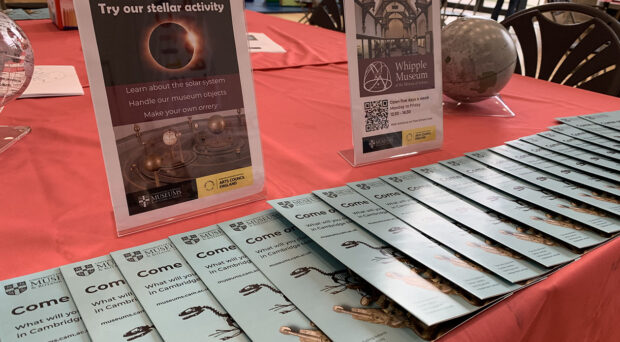With their doors closed, staff at home and social distancing the new norm, how can and how are Museums continuing to play an active and relevant role in people’s lives?
Nathan Huxtable shares his experience here of developing and delivering a remote pilot session designed to engage the University of Cambridge Museums‘ (UCM) Portals to the World participants; people with a dementia diagnosis or cognitive impairment and their care partners. Nathan is the Fitzwilliam Museum’s Education Assistant and a practicing artist.
In its tenth year, Portals is a partnership programme delivered with Dementia Compass and combines regular courses with an Alumni programme. The regularity promotes familiarity, confidence and trust in the Museums. Each session comprises of a talk, gallery exploration and a creative or object handling activity. Portals emphasises ability over disability and provides opportunities for people to learn, share and create and to experience ‘respite together’.
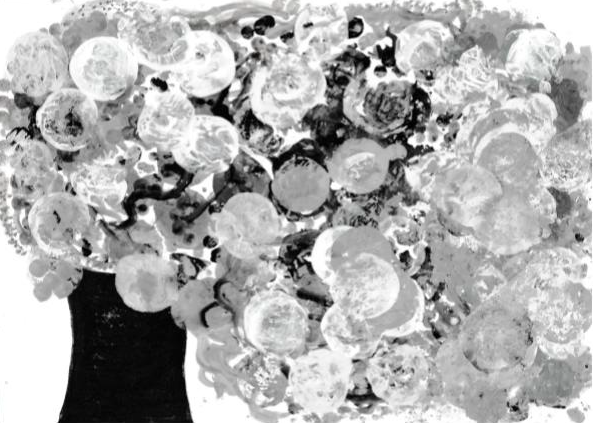
What were the challenges you faced in moving Portals to The Shed?
Delivering a talk and a making session live from The Shed (my studio in the garden) was always going to be a challenge; I’d never used Zoom and we didn’t know how the participants were going to engage with this format and the weather in June was fantastic! which meant The Shed, at 8ft x 6ft was very hot! Additionally, my 2008 MacBook is slow and Wi-Fi unreliable (in the garden where The Shed sits).
Fortunately … my iPhone was a fairly recent model and up to the task and I’d brought an iPhone holder home (thinking it may be helpful) and (another stroke of luck) I had an unlimited data gift, for one month, allowing me to use the 4g network without fear of incurring extra charges.
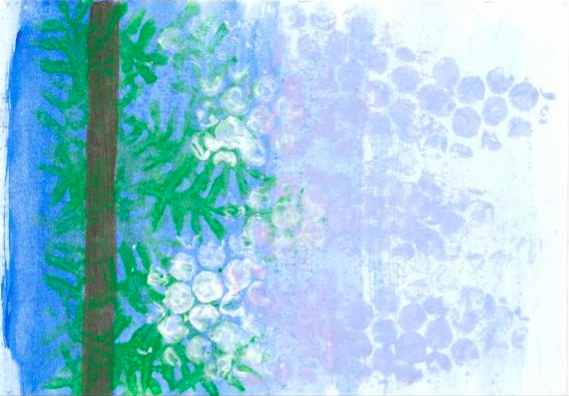
How did you plan for the session content?
After liaising with Ruth Clarke, UCM Inclusion Associate and Edye Hoffman from Dementia Compass we agreed to keep the format of the session as close to those at the Museums. Edye was to host the session on Zoom (as she has been building her expertise in this for a while) and I would concentrate on the delivery; being guided by Edye was a huge help, I’m not sure it would be possible to deliver a session like this on your own.
I was to be the session’s speaker or subject specialist, after which I was also to deliver the practical art activity; the theme for both was Oval Works, Gaze Left (1997) by artist Gary Wragg, a painting which usually hangs in the Fitzwilliam’s 20th Century Gallery.
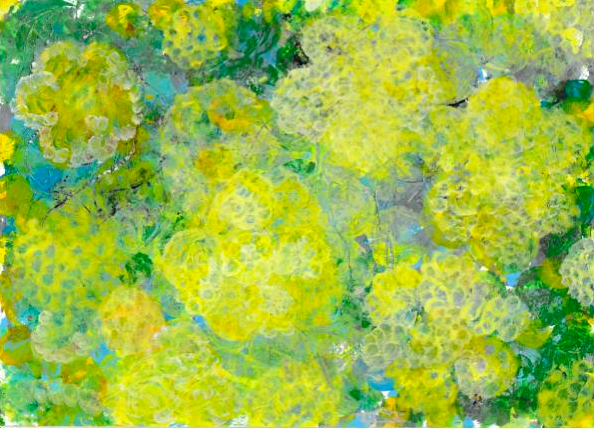
During the lockdown period, I began a personal project, the Daily Postcards (Instagram link, Twitter link) where I have been painting cards and sending them out to people in isolation as a way of engaging, hopefully cheering people up and staying in contact during the crisis. Conversations between Ruth and I led us to choose this approach as the making activity; there is something wonderful about making, sending and receiving something handmade through the post.
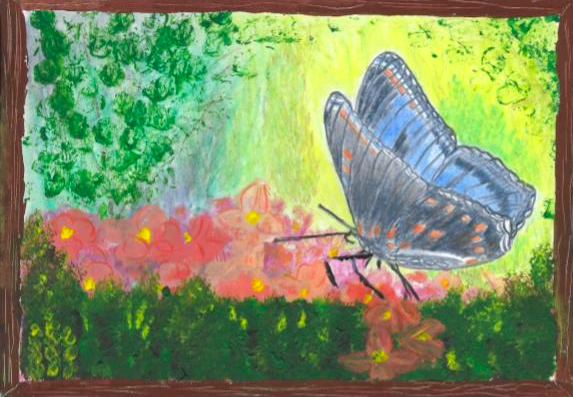
Gary Wragg’s colorful abstract painting lent itself to experimentation and play, particularly as we were using bubble wrap, as Wragg does in his painting, to print onto our card. The participants were all sent a pack with materials so everyone could take part and were invited to send the postcards to the Fitzwilliam where they will eventually go on display and be shared virtually during this time of separation.
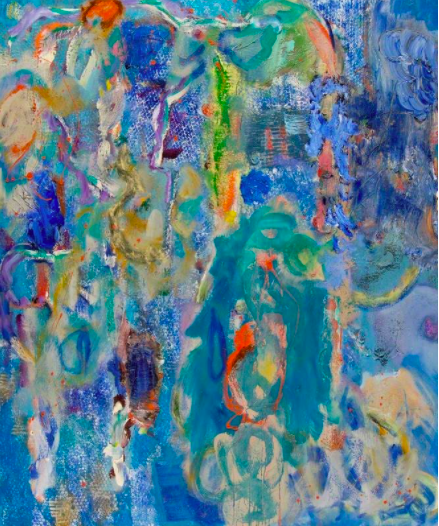
After all the planning … how did it go?
I had a few worries as to whether the painting would be well received by the group. We don’t often venture into the world of contemporary art; was worth the risk? I hoped at least it would spark some conversation.
I joined Edye online and when we were ready, we welcomed the group. I will never forget seeing and hearing everyone for the first time; it was joyful and uplifting to see people, albeit remotely! many of whom I have now known for several years through Portals,
After the short talk (20 minutes) and a question and answer discussion session (15 minutes) I was pleased that participants were, overall, clearly enjoying the work. I did notice that one gentleman, a keen artist himself, really didn’t like it- finding it too busy, but others interpreted it differently, with lots of discussion taking place – all of which made me hopeful for the making session to follow.
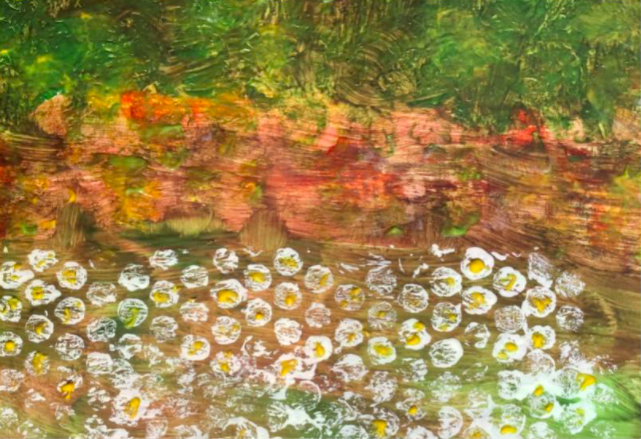
Before we began the making, we took a short comfort break, allowing me to grab some much-needed fresh air and drink. The Shed was getting very hot indeed! I had the door closed as my neighbor one side was hosting a very loud business call and my neighbor the other side was busy gardening. This all felt rather surreal but as we were in surreal times, I just went with it.
For the postcard painting I angled the phone down so the camera was recording my desk and everyone could see the making in progress. I worked on four pieces talking through the process as I went.
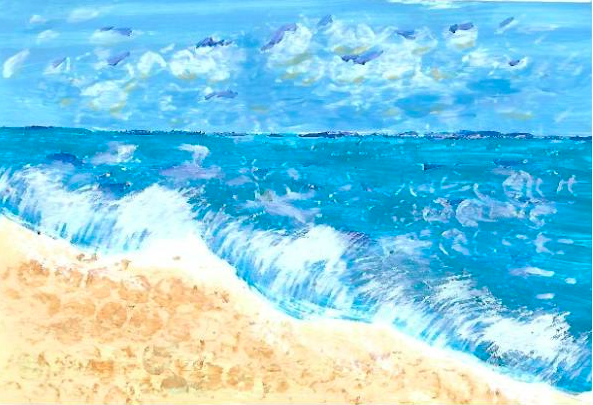
Have you had any feedback?
After the live session I was a bit ‘punch drunk’ and unsure how it had gone. It was a great feeling having seen and engaged with the group and it felt good having done something we had never attempted before.
Ruth has collected feedback and she and Edye have used this to help plan for the next session (from the Zoology Museum team). This really was something different, working remotely and then making at home and sharing those creations; from the feedback sent in, it feels as though for most people it’s a positive intervention. Ruth has shared the postcards made by the participants which are truly incredible and humbling; seeing how people have engaged and responded to the activity has been wonderful, I really hope the session has had as positive an impact on them as it has on me.
What has this challenge meant to you?
Working differently and taking on new technology in conjunction with the truly analogue postcard painting activity has been a joy. We spend most of our time at the Museum engaging with ancient peoples and technologies; it’s brilliant, that in these unprecedented times we are finding new technologies and solutions to help connect with people remotely but still in an honest and human way.
What have you been doing since?
I’ve continued to support the Portals art making sessions (following the talk by a subject specialist). These are pre-recorded, allowing participants to view content where and when suits them – and as many times as they wish! We are continuing to be use the format of postcards as the vehicle. So far, I’ve made a film for the Zoology Museum’s insect session which draws on the blurring of colours that happens in the rapid movement of insects and at the time of writing this blog, I’m making a film for the Sedgwick Museum’s dinosaur session.
Last words
I’m looking forward to seeing everyone post-lockdown, but in the meantime, I’m very much enjoying the resilience and teamwork being shown by all my colleagues!







